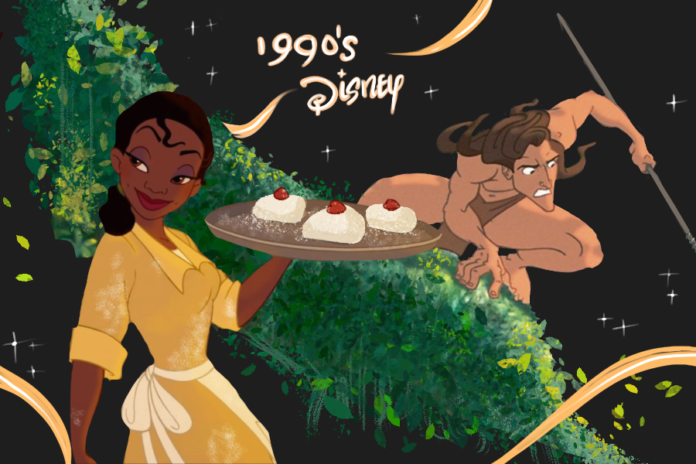The studio giant has rested on its laurels for too long
By MAYA KORNYEYEVA — mkornyeyeva@ucdavis.edu
Disney, the company which has continuously dominated the entertainment industry since its establishment in the 1920s, has historically created some of the best animated feature films in the world. From classics like “Mulan” and “The Lion King” to more recent films such as “Soul” and “Coco,” there’s something positively enchanting about the way their stories come to life through animation.
However, over the last few years I have noticed a change in the general quality of Disney’s newly released films. More often than not, over-bubbly CGI, transparent characters and loosely woven stories dominate the screen. Examples of such movies include box office flops “Strange World” and “Turning Red” — don’t get me wrong, these movies aren’t terrible, but they by no means measure up to some of the films Disney released earlier in its career.
Call me nostalgic, but I truly miss the glory of Disney’s 1990s “renaissance era.” What I believe made this 10-year period such a success was the beautifully hand-drawn 2D animation and the incredible depth of the stories. The characters didn’t feel superficial or forced; for instance, animated films like “Tarzan” and “The Princess and the Frog” both contained well-developed character arcs while also presenting hidden commentary about social standards and world views. In “Tarzan,” the prevailing message was the need for the preservation of the natural world, along with the complex notion of identity and belonging. In “The Princess and the Frog” the underlying message supported the idea of following your dreams through independent hard work and the concept of not allowing society to confine you based on your appearance or background.
Most, if not all, of the 2D animated hit films from the ‘90s contain similarly complex morals that worked to educate an entire generation. I find this aspect of earlier Disney movies lacking in films released in the last two to three years.
Another key feature of earlier Disney films is, as aforementioned, the animation. There’s just something so incredibly satisfying about watching two-dimensional animation in action: Disney’s classic style created soft, natural features with the aesthetic of European illustrations — dubbed “storybook realism” — which was initially developed by the founder of the company Walt Disney himself. This art style was specifically designed to make the characters come to life, to feel as though they exist in the real world and are burdened with real-world problems.
This aspect of the animation allows viewers to directly relate to the characters, even though they are merely illustrations on the screen. Paired with a well-developed plot and camera angles that mimicked those used on live-action movie sets, Walt Disney managed to approach 2D animation in a fundamentally unique and profound way.
In a 1935 memo, Walt Disney wrote: “Our study of the actual is not so that we may accomplish the actual, but so that we may have a basis upon which to go into the fantastic, the unreal, the imaginative – and yet to let it have a foundation of fact, in order that it may more richly possess sincerity and contact with the public.” Up until recently, I think the company has been staying true to this ideal. Watching newly-released Disney movies, I feel as though something crucial is missing.
What could be the reason for Disney moving away from the quality of animated feature films they were so championed for producing in the 1900s and early 2000s? I believe that it may have a lot to do with budget and technology, as well as over-stretching the capabilities of the company. In the last ten years, Disney has grown into a monopoly-like power within the global entertainment industry, specifically with its acquisition of franchises like Marvel, Star Wars and Pixar. As it stands, Disney seems to have a lot on their plate — not to mention the upkeep of Disneyland, Disney World and Universal Studios theme parks and their streaming service, Disney+.
Furthermore, 2D animation is a tedious process that requires a lot of time. With CGI becoming cheaper and more accessible, 3D animation is simply easier and faster to achieve, especially with the help of artificial intelligence and other similar technologies.
With all that being said, I can only hope that, with this switch to 3D graphics, Disney ensures that their upcoming film repertoire is not oversaturated with shallow messages: the company truly needs to gain back their viewer’s attention to bring up earnings from box office ticket sales and encourage people to leave the comfort of their streaming services to watch Disney movies in theaters once again.
Written by: Maya Kornyeyeva — mkornyeyeva@ucdavis.edu
Disclaimer: The views and opinions expressed by individual columnists belong to the columnists alone and do not necessarily indicate the views and opinions held by The California Aggie.




